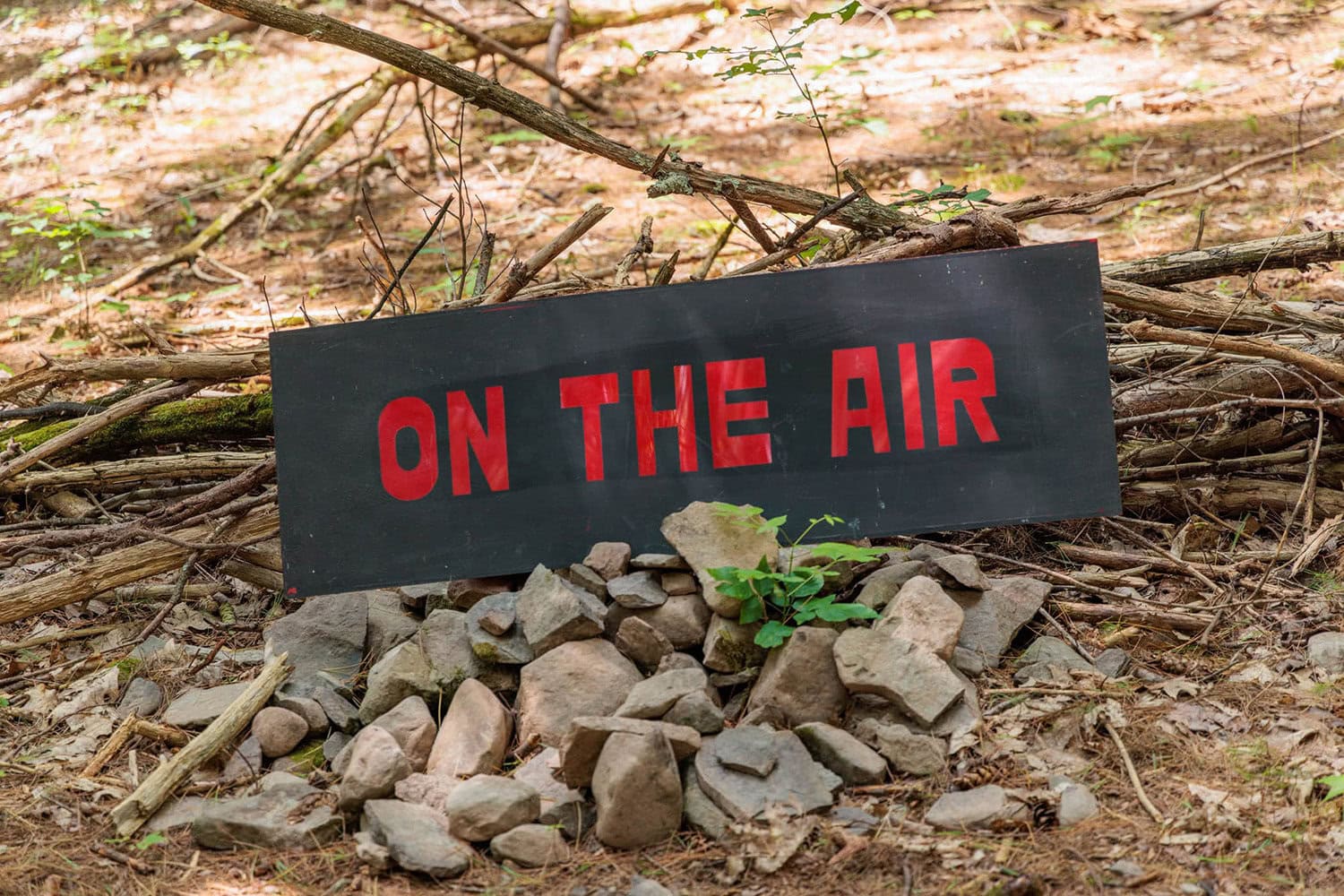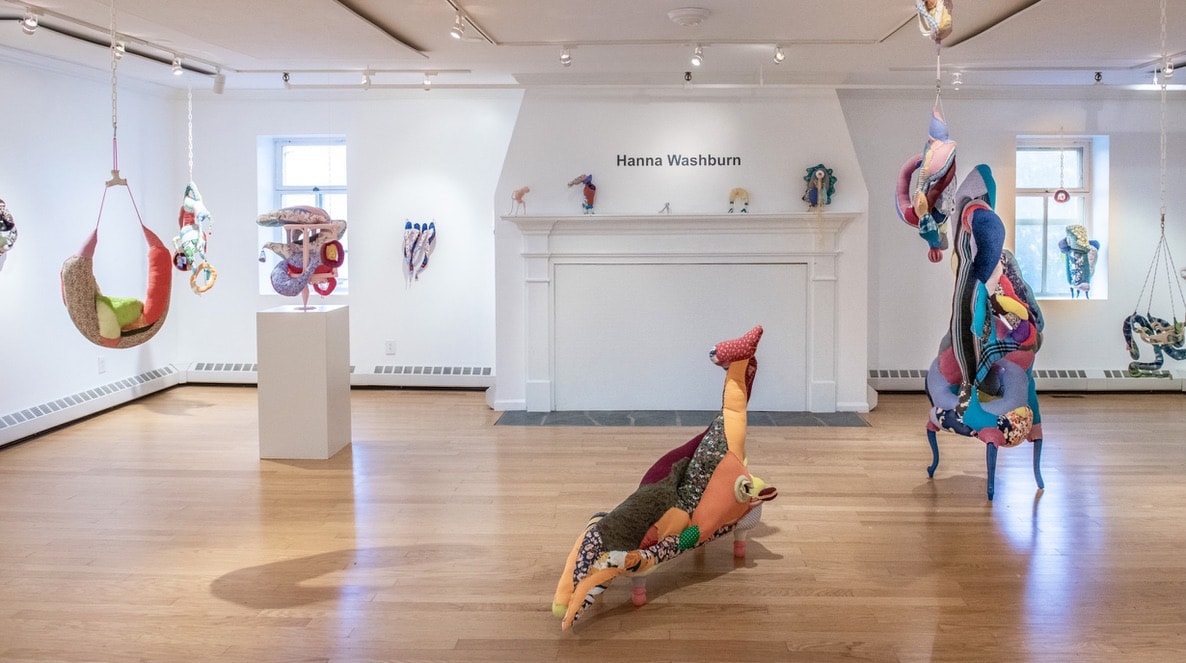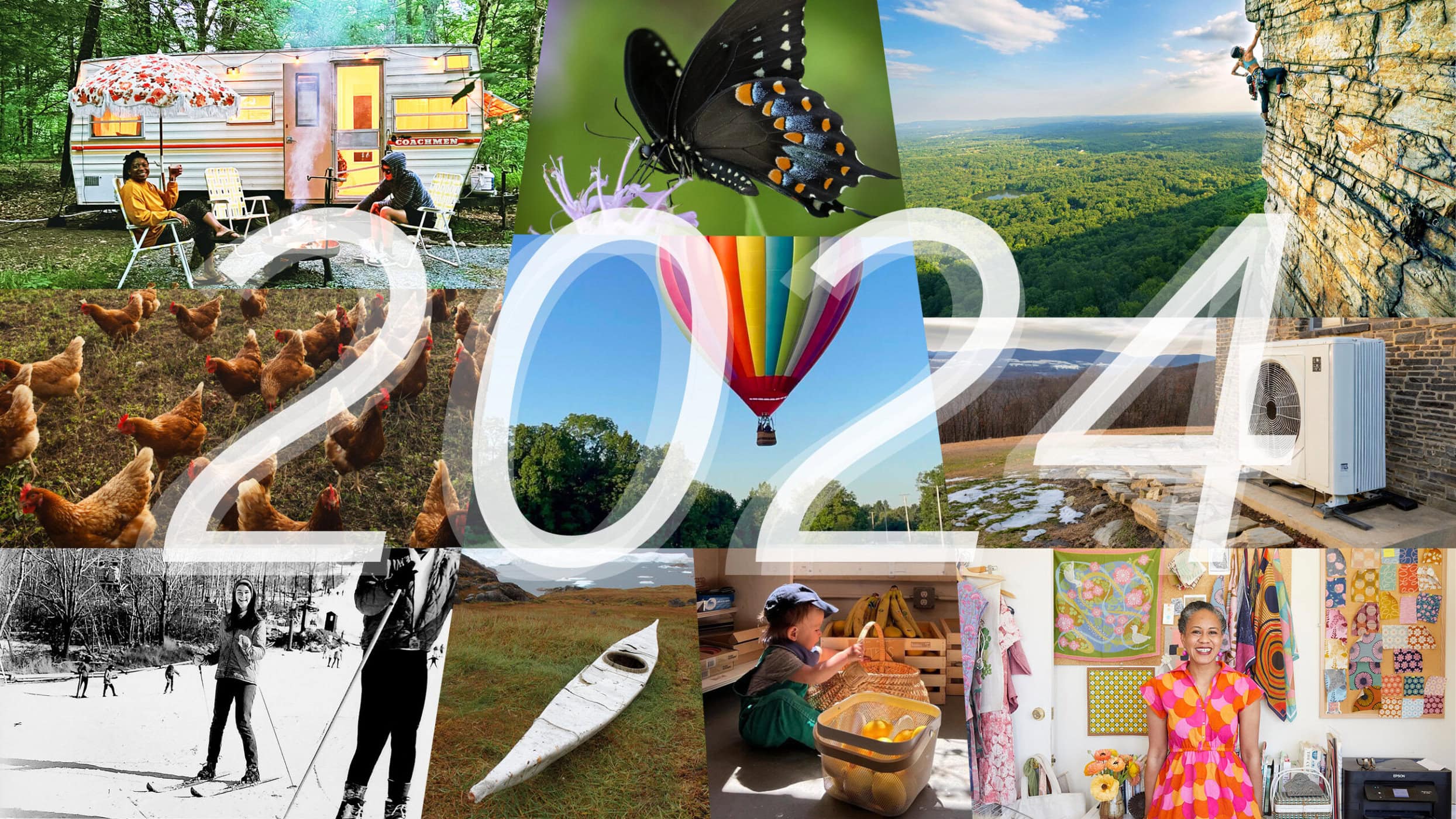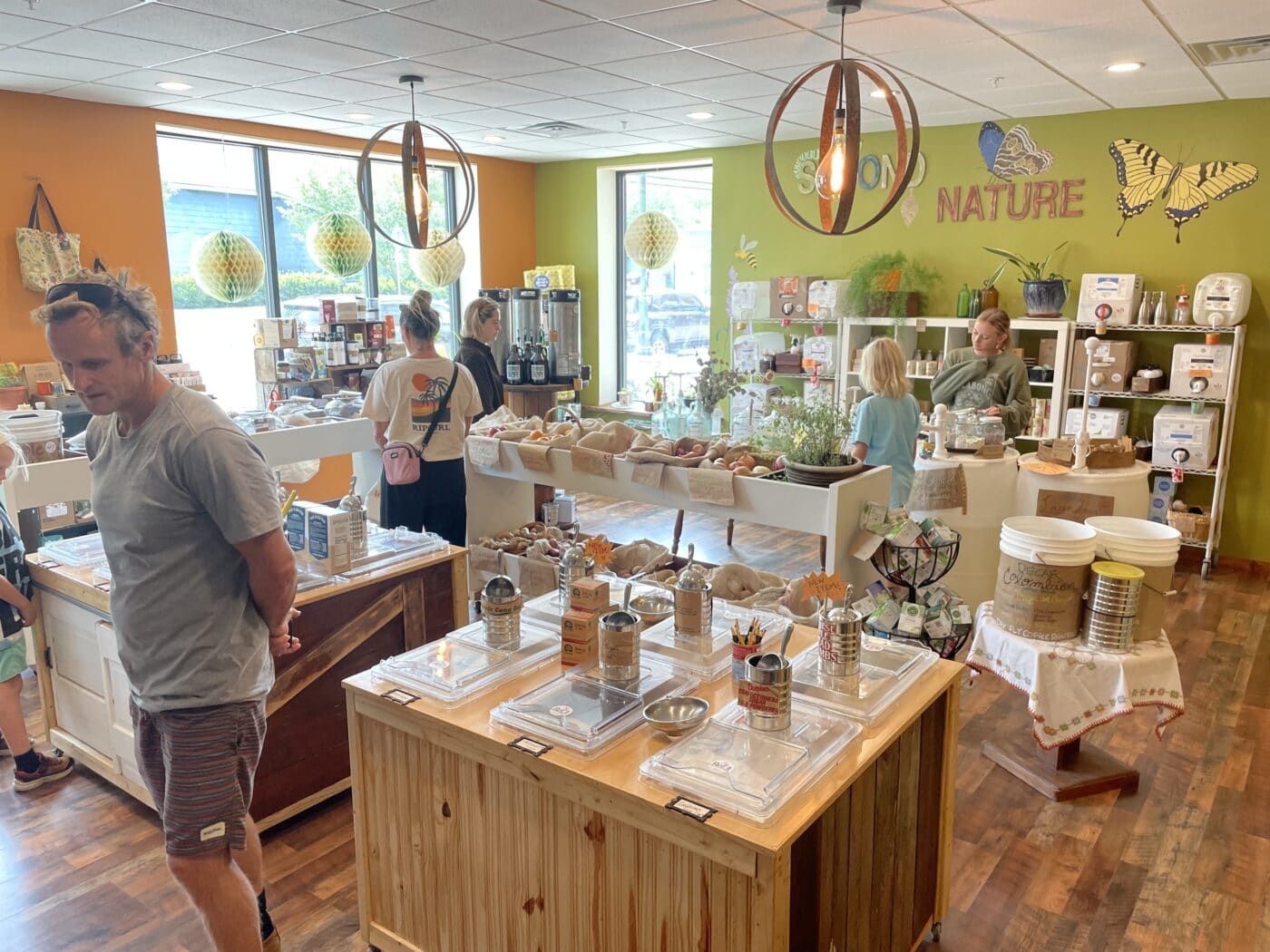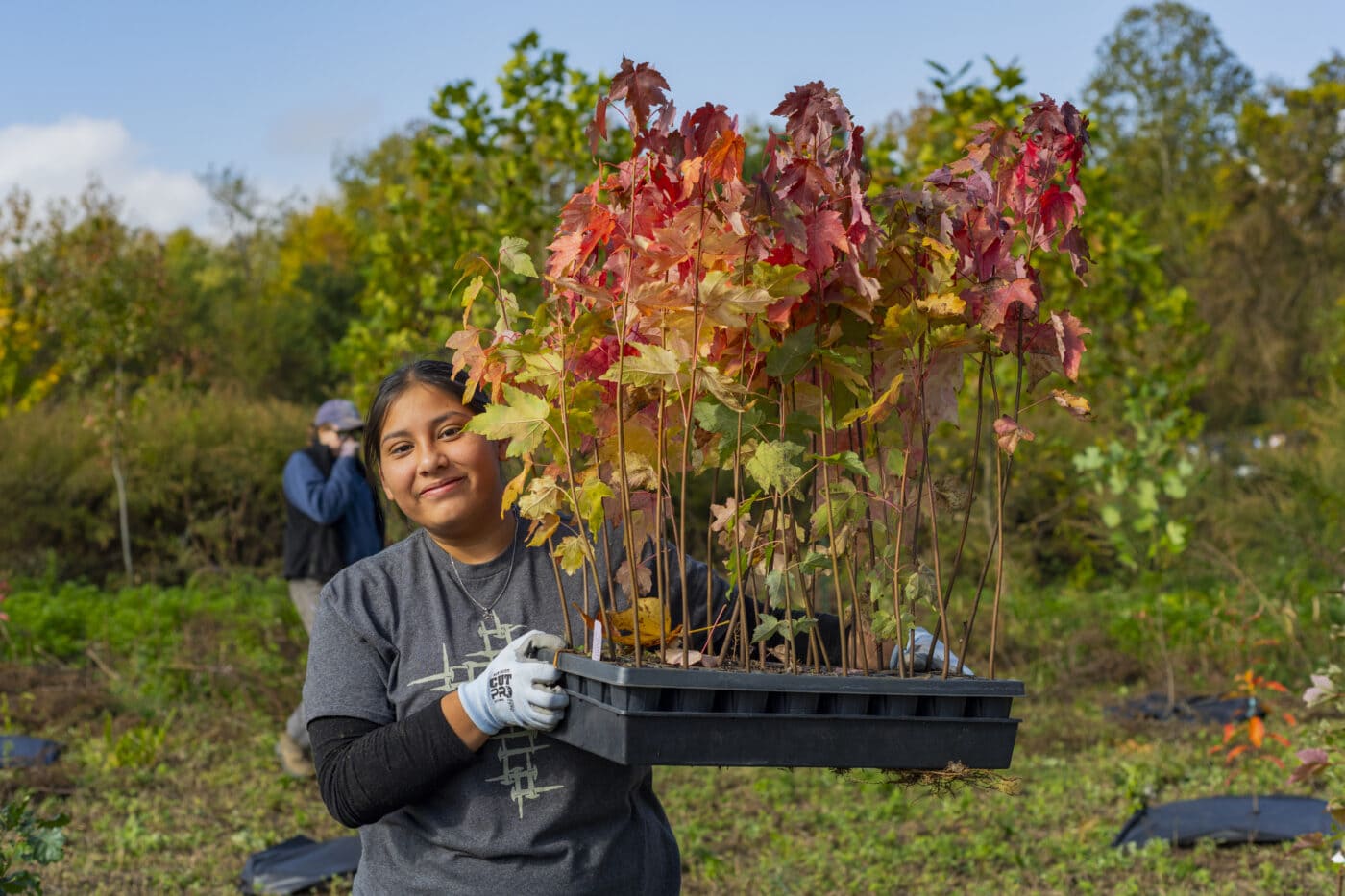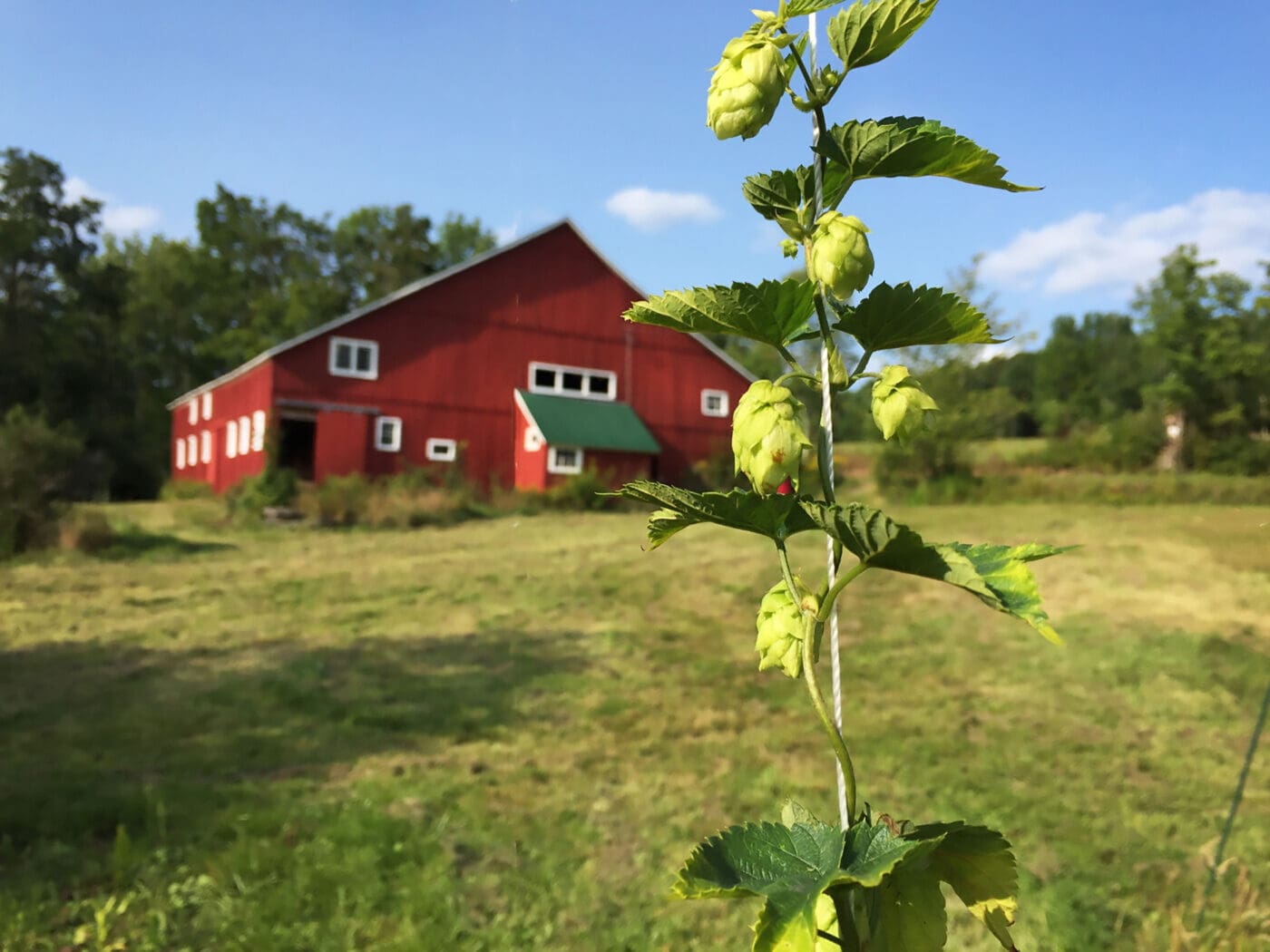Bodies of water — rivers, lakes, the ocean — have played a major role in the lives of African Americans. Water provided passage to the ships that brought Africans to the Americas in chains; later, water served as a means of escape from slavery. In New York, a popular route favored by those using the Underground Railroad included the upper Hudson River. It connected people to Lake Champlain, providing access to freedom in Montreal, Canada.
For artist and photographer Daesha Devón Harris, the landscape and waters of the Hudson Valley region were important. Her ancestors arrived in Saratoga Springs, N.Y., five generations ago via Virginia.
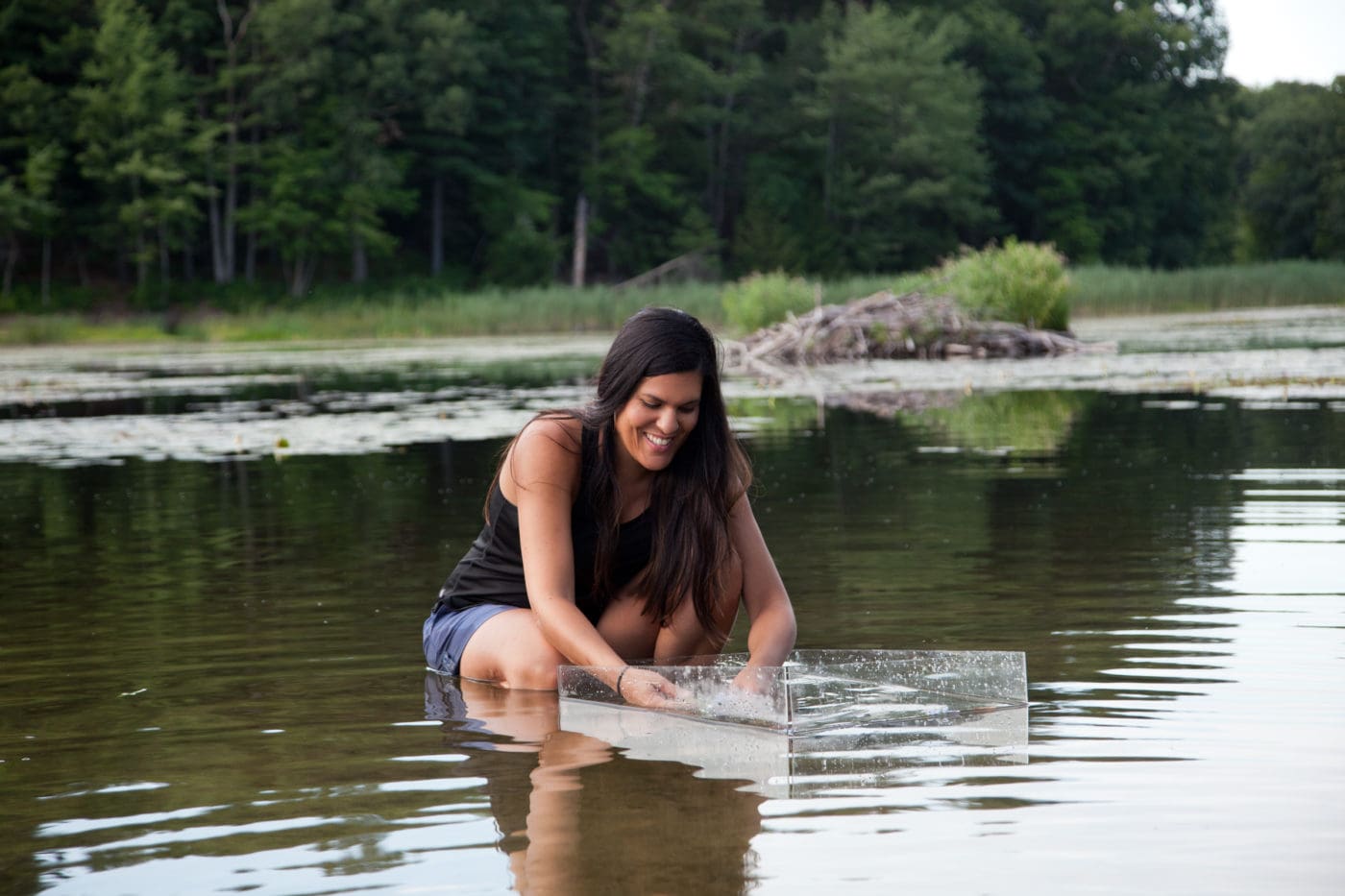
These same waters inspired Harris to create her dynamic, colorful and yet haunting folktale series, “Just Beyond the River.” On family fishing trips, Harris explains, she was always drawn to the bottom of the river. “It’s really beautiful, it’s like a whole other world,” she says. “So I made a note that I would do something with those images one day.”
One of Harris’ hobbies is collecting Victorian-era black-and-white images of unidentified African American men, women and children, sourced from trips to flea markets in New York State.
She used some of them in “Just Beyond The River,” making them transparent through a scanning and printing process, then placing and photographing the transparencies in ponds, lakes and rivers in the Hudson Valley.
Each image was then paired with an object unique to the life story she reimagined for each figure. For those, the artist drew on selected words from African American literature, such as slave narratives, oral history and poetry from the Harlem Renaissance era.
We spoke to Harris to find out more about her process and the inspiration behind select pieces in the series.
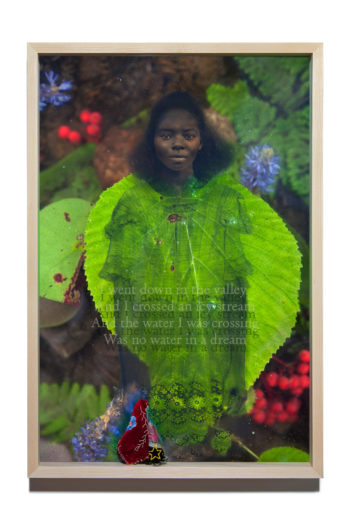
I went down in the valley And I crossed an icy stream
And the water I was crossing Was no water in a dream
Just Beyond the River: A FolkTale series
Chromira print and quilt square in hardwood box with etched glass
Fall 2017, 31” x 21”
Aug 1, 2018
Harris: On this person’s journey towards freedom, they traveled on a wagon and she specifically mentioned how they had feather beds and patchwork quilts that they had made in the wagon with them, so that was powerful to me in terms of the detail. When this person crossed over the river, she became an abolitionist and was known for her hospitality in taking other people in, so I liked the symbolism of the blanket also extending to her hospitality. I stitched a small star on the quilt to reference the North Star, which they (African Americans escaping slavery) used for direction.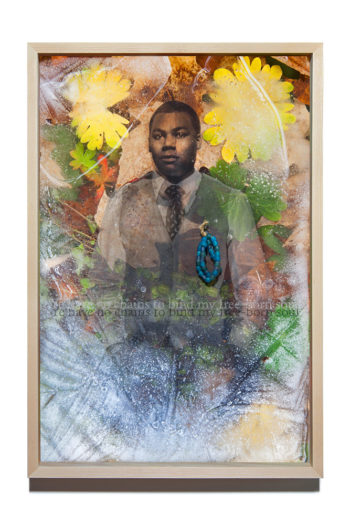
Ye have no chains to bind my free-born soul
Just Beyond the River: A FolkTale
Winter 2016
31” x 21”
Chromira print and glass beads in hardwood box with etched glass
Harris: The glass beads in this piece were given to this individual by his mother, who was given the beads by her mother as a keepsake when she died and they were the only thing that made it from Africa to America. They are not the original beads obviously, but I was fascinated by having such an old memento in a family.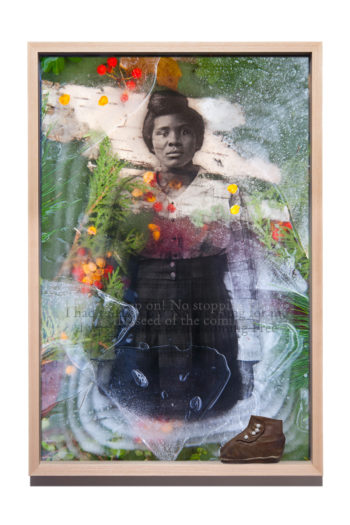
I Had to Keep On! No Stopping for Me- I Was the Seed of the Coming Free
Just Beyond the River: A FolkTale series
Chromira print and bootie in hardwood box with etched glass
Winter 2015, 21” x 31”
Apr 26, 2016
Harris: This piece was inspired by the story of Eliza Harris [Editor’s Note: Her story is widely known due to the novel Uncle Tom’s Cabin.] After finding out that her slave owner was going to sell her, and thus separate her from her only surviving child, she decided to escape. It was winter and she was in Kentucky. The night of her escape, she discovered that the Ohio river wasn’t fully frozen, so she had to jump from iceberg to iceberg, tossing her baby in front of her. She made it to safety and eventually to Canada. The bootie represents the fact that not everything that they had left with made it across and also symbolizes her strength.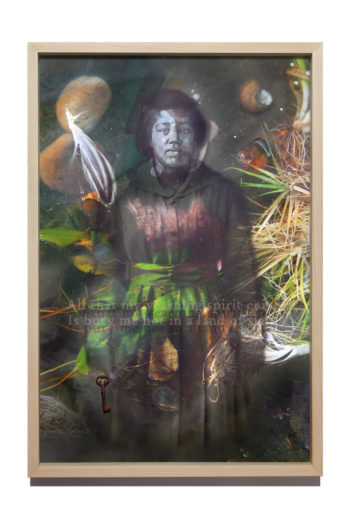
All That My Yearning Spirit Craves Is Bury Me Not in a Land of Slaves
Just Beyond the River: A FolkTale series
Chromira print and key in hardwood box with etched glass
Summer 2015, 21” x 31”
Apr 26, 2016
Harris: This is a story of beyond the grave revenge. It’s from a folktale about an enslaved girl who had helped spy for the Yankees during the Civil War. Her enslaver ordered her to dig a hole, which was meant to hide a chest of gold. He buried her in the hole after he found out she was a spy. However, she haunted him and he eventually drowned in a swamp trying to escape her ghost. The key represents that you can’t run away from history — it can’t be buried. It has to be reckoned with.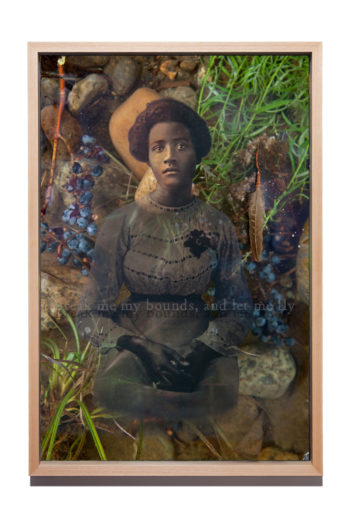
Break me my bounds, and let me fly
Just Beyond the River: A FolkTale series
Chromira print and feather in hardwood box with etched glass
Winter 2015, 31” x 21”
Dec 29, 2017
Harris: This is inspired by the folktale “The People Could Fly” or “The Flying African.” Some enslaved African Americans would try to escape and one day, this enslaved woman collapsed in the field. The overseer violently abused her. There was a young spiritual leader among them. He uttered a word and they flew away into the distance back to their homes in Africa. This story also draws inspiration from the Igbo Landing. [Editor’s Note: In the Igbo Landing fable, West African slaves committed suicide at Dunbar Creek in 1803 by taking control of a slave ship and drowning as a resistance to being made into slaves.)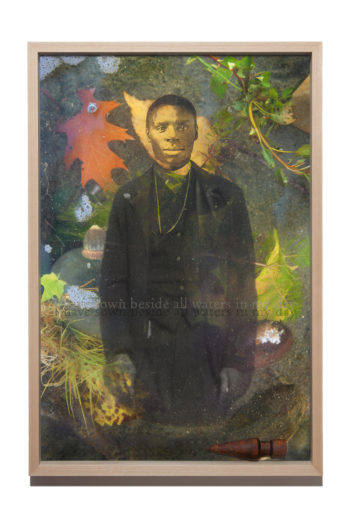
I Have Sown Beside All Waters in My Day
Just Beyond the River: A FolkTale series
Chromira print and dibber in hardwood box with etched glass
Summer 2015, 21” x 31”
Apr 26, 2016
Harris: This story is about an enslaved man who worked mostly in the field. One day, he saw his slave master’s children drowning in the river and he saved them. Instead of being given his freedom, his master told him he would be free only if the crop of the season was good. The enslaved man did the work, and his master decided to release him but told him he would always be the derogatory word that was used then for African Americans.




